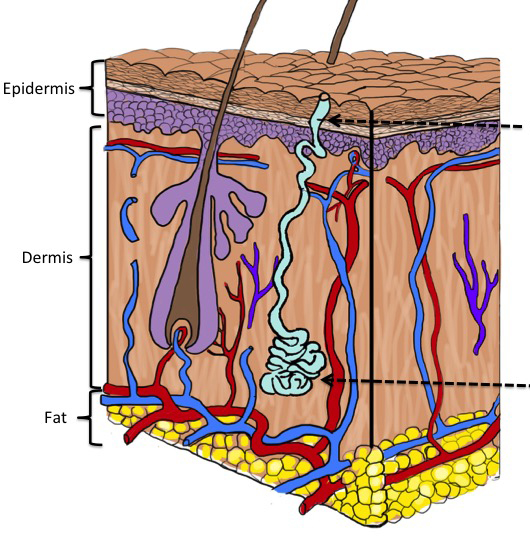A: You are right: skin is indeed made up of 3 distinct layers, each with strikingly different characteristics and functions.
These layers are: epidermis, dermis, and subcutaneous fat. Skin diseases often primarily localize to one of these layers, which can be important for their diagnosis. Understanding the structure of skin also helps us to take better care of it.



